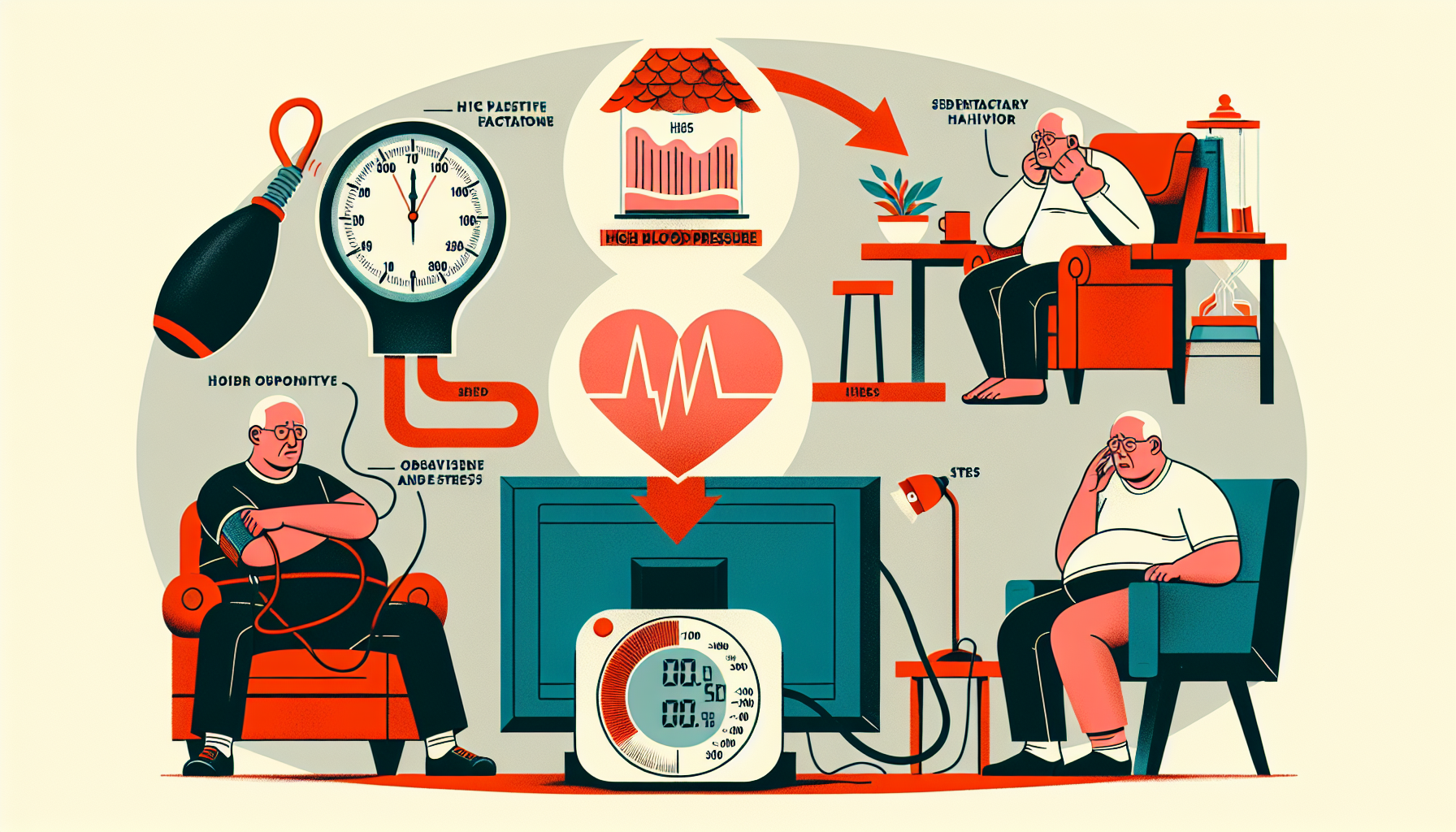Best Medicaid Health Plans For Your Loved Ones
Discover the best Medicaid health plans for your loved ones. Compare options, eligibility, and future policies for optimal care.

Choosing The Right Plan
When it comes to selecting the best Medicaid health plan, it's important to understand the different types of plans available. Three common plan options are Health Maintenance Organizations (HMOs), Preferred Provider Organizations (PPOs), and Point-of-Service (POS) plans.

Understanding HMOs
HMOs typically limit coverage to care from in-network doctors or specialists, except in emergencies. To be eligible for HMO coverage, you may need to live or work in a specific service area [1]. Under HMO plans, members are usually required to use the HMO's network of providers. Visits to specialists are often covered only with a referral from the member's primary care physician. However, emergency care for life-threatening conditions is typically covered without the requirement of using network providers [2].
Benefits of PPOs
PPOs provide a network of healthcare providers to control costs. By using providers within the plan's network, you can pay less for services. Unlike HMOs, PPOs also offer the option to use out-of-network providers, although this may come at an additional cost. With PPO plans, insured individuals can typically self-refer to specialists without needing a referral from their primary physician. This flexibility allows you to have more control over your healthcare decisions while still benefiting from reduced costs within the network [2].
Exploring POS Plans
POS plans combine aspects of traditional medical insurance, HMOs, and PPOs. These plans offer reduced costs for in-network providers and require referrals from your primary care doctor to see a specialist. Similar to HMOs, POS plans provide less coverage for out-of-network services and typically have higher coinsurance costs for medical care received outside the network. However, they provide the option to receive care from a physician within the plan's network or seek services outside the network at the point of service [1].
By understanding the differences between HMOs, PPOs, and POS plans, you can make an informed decision when choosing the best Medicaid health plan for yourself or your loved ones. Consider factors such as network coverage, cost considerations, and the level of flexibility you desire in managing your healthcare needs.
Medicaid Health Plan Options
When it comes to choosing the best Medicaid health plan for your loved ones, it's important to consider the available options and their benefits. In Virginia, some of the top Medicaid health plans include Aetna Better Health, Anthem HealthKeepers Plus, Molina Healthcare, Sentara Community Plan, and UnitedHealthCare Community Plan, as mentioned by Virginia Managed Care.
Aetna Better Health
Aetna Better Health is recognized as one of the leading Medicaid health plans in Virginia. They offer a comprehensive range of services, including preventive care, prescription drugs, and specialist visits. Aetna Better Health focuses on improving the overall health and well-being of their members through personalized care coordination and support.
Anthem HealthKeepers Plus
Anthem HealthKeepers Plus is another prominent Medicaid health plan available in Virginia. They strive to provide comprehensive coverage and access to a wide network of healthcare providers. Anthem HealthKeepers Plus emphasizes preventive care and offers various programs aimed at managing chronic conditions and promoting overall wellness.
Molina Healthcare
Molina Healthcare is known for its commitment to providing quality healthcare to Medicaid beneficiaries. They offer a range of services, including preventive care, hospitalization, and prescription drugs. Molina Healthcare places a strong emphasis on care coordination and works closely with healthcare providers to ensure seamless and efficient delivery of services.
Sentara Community Plan
Sentara Community Plan is a Medicaid health plan that focuses on delivering personalized, patient-centered care. They offer a comprehensive suite of benefits, including preventive care, behavioral health services, and prescription drugs. Sentara Community Plan places a strong emphasis on preventive care and works closely with members to help them achieve their health goals.
UnitedHealthCare Community Plan
UnitedHealthCare Community Plan is a trusted Medicaid health plan that offers a wide range of services and benefits to its members. They prioritize accessibility and affordability, ensuring that members have access to a network of healthcare providers and receive the care they need. UnitedHealthCare Community Plan also offers additional support programs to address the unique needs of their members.
These Medicaid health plans provide valuable coverage and access to essential healthcare services for individuals and families in Virginia. When choosing the best plan for your loved ones, it's important to consider their specific healthcare needs, preferences, and the network of healthcare providers available with each plan. By thoroughly researching and comparing the different options, you can make an informed decision that best meets the healthcare requirements of your loved ones.
Special Needs Plans
When it comes to Medicaid health plans, special needs plans (SNPs) play a crucial role in providing tailored healthcare options for individuals with specific needs. SNPs are designed to address the unique requirements of individuals with chronic conditions and other special needs. Let's explore two important aspects of SNPs: chronic conditions and customized C-SNPs.
Chronic Conditions
SNPs are available for individuals with specific chronic conditions, ensuring that they receive the specialized care they need. The Centers for Medicare & Medicaid Services (CMS) has identified 15 chronic conditions that make individuals eligible for SNPs, including chronic heart failure, diabetes mellitus, stroke, and more [3].
By enrolling in an SNP that targets their specific chronic condition, individuals can benefit from a care plan that is designed to address their unique healthcare needs. This specialized approach allows for better management of chronic conditions, resulting in improved health outcomes and quality of life for the beneficiaries.
Customized C-SNPs
Within the realm of SNPs, there are customized Chronic Condition Special Needs Plans (C-SNPs). These plans are tailored for individuals with multiple chronic conditions, requiring coordinated care across various healthcare providers. CMS accepts applications for C-SNPs that target specific multi-condition groupings, such as diabetes mellitus and chronic heart failure, chronic heart failure and cardiovascular disorders, and more.
Managed Care Organizations (MCOs) have the flexibility to develop their own multi-condition C-SNPs, as long as they align with the 15 chronic conditions selected by the panel of clinical advisors. To ensure the adequacy of care management systems, CMS assesses each condition in the combination proposed by MCOs seeking to offer customized multi-condition C-SNPs.
By offering customized C-SNPs, Medicaid health plans can address the complex healthcare needs of individuals with multiple chronic conditions. These plans provide comprehensive care management, fostering better coordination among healthcare providers and improving the overall well-being of the beneficiaries.
When exploring Medicaid health plan options for your loved ones with special needs, it's essential to consider SNPs that cater to their specific chronic conditions. By choosing the right plan, you can ensure that your loved ones receive the necessary care and support to manage their health effectively.
Medicaid Eligibility
Before selecting a Medicaid health plan for your loved ones, it's important to understand the eligibility criteria. Medicaid eligibility is determined based on both financial and non-financial factors. Let's explore these criteria in detail.
Financial Criteria
To qualify for Medicaid, individuals must meet certain financial criteria. The specific income and resource limits vary by state, as each state has the flexibility to set its own guidelines. These limits are typically based on the Federal Poverty Level (FPL) and take into account factors such as household size and income sources.
To determine eligibility, states consider an individual's income and assets. Income includes wages, Social Security benefits, pensions, and other sources of regular income. Assets include things like bank accounts, investments, and property. Some assets, such as a primary residence or a vehicle, may be exempted from consideration.
It's important to note that states have the option to establish a "medically needy program" for individuals with significant health needs. This program allows individuals to qualify for Medicaid by "spending down" the amount of income above the state's medically needy income standard. Once expenses exceed this "spenddown" amount, individuals can be eligible for Medicaid. This program is used by 36 states and the District of Columbia.
Non-Financial Criteria
In addition to the financial criteria, individuals must also meet certain non-financial criteria to be eligible for Medicaid. These criteria include:
Each state has its own specific eligibility requirements within these non-financial criteria. It's important to check with your state's Medicaid program or visit the Medicaid.gov website for detailed information about eligibility in your state.
If an individual believes their Medicaid application has been denied incorrectly or if there has been a delay in the state's action, they have the right to request a fair hearing. This allows individuals to appeal the decision or action taken by the state agency. Appeals processes can be conducted by the Medicaid agency or delegated to other entities.
Understanding the financial and non-financial eligibility criteria is essential when navigating the Medicaid system. It is advisable to consult with your state's Medicaid program or seek assistance from a Medicaid enrollment specialist to ensure accurate and up-to-date information specific to your situation.
State Coverage Comparison
When it comes to Medicaid health plans, it's important to consider the coverage and availability of services in different states. Medicaid spending and state rankings can provide valuable insights into the quality and accessibility of healthcare for individuals enrolled in the program.
Medicaid Spending Analysis
In fiscal year 2016, total Medicaid spending in the U.S. exceeded $533 billion, with nearly 74 million Americans enrolled in Medicaid, accounting for approximately 1 in 5 Americans. Medicaid is a jointly funded program by the federal government and states, providing health insurance for low-income and elderly populations.
Figures courtesy of U.S. News
State Rankings
Each state has its own unique Medicaid program, which may offer different benefits and services. State rankings provide an understanding of how different states fare in terms of Medicaid coverage and overall healthcare systems.
While rankings may vary, it's important to consider factors such as access to care, quality of services, and the range of benefits provided by each state's Medicaid program. These rankings can help caregivers and families of senior patients make informed decisions when choosing the best Medicaid health plans.
It's worth noting that despite the proposal for reduced federal funding for the Medicaid program by the Trump administration, as part of the Affordable Care Act, 33 states and the District of Columbia expanded their Medicaid coverage. This expansion has played a vital role in improving healthcare access for low-income individuals and families.
When considering Medicaid health plans, it is recommended to research and compare the coverage options available in your state. This will help ensure that your loved ones receive the necessary healthcare services they require, tailored to their specific needs.
By understanding the Medicaid spending analysis and state rankings, caregivers and families can make more informed decisions when selecting the best Medicaid health plans for their loved ones. Remember to research the specific details of each state's Medicaid program to ensure the coverage aligns with the unique healthcare needs of your family members.
Future of Medicaid
As the healthcare landscape continues to evolve, the future of Medicaid is subject to various policy changes and potential expansions. These changes can have a significant impact on the availability and quality of healthcare for individuals who rely on Medicaid for their coverage.
Policy Changes
Under the current administration, President Joe Biden has expressed intentions to expand the Medicaid program and eliminate requirements for individuals to work in order to receive coverage. This approach contrasts with certain states that had previously approved work requirements during the previous administration. These policy changes aim to increase access to healthcare for vulnerable populations and ensure that individuals have the necessary coverage without burdensome prerequisites.
Impact of Medicaid Expansion
Despite the Trump administration's proposal for reduced federal funding for the Medicaid program, as part of the Affordable Care Act, 33 states and the District of Columbia expanded their Medicaid coverage. This expansion has significantly increased Medicaid enrollment and accessibility to healthcare services for low-income and elderly populations. It has played a crucial role in ensuring that millions of Americans have access to essential healthcare services [5].
In fiscal year 2016, total Medicaid spending in the U.S. exceeded $533 billion, with nearly 74 million Americans enrolled in Medicaid, accounting for approximately 1 in 5 Americans. Medicaid is jointly funded by the federal government and states, and it provides health insurance for low-income and elderly populations. The expansion of Medicaid has allowed more individuals to receive the necessary medical care they need to maintain their health and well-being [5].
Let's take a closer look at the top 10 states for Medicaid spending:
Figures courtesy of U.S. News
These states represent significant investments in Medicaid, demonstrating their commitment to providing accessible healthcare to their residents. The future of Medicaid will likely continue to see changes and developments that aim to improve the quality of care and expand coverage to those in need. It is essential to stay informed about these policy changes and their implications in order to navigate the Medicaid landscape effectively.
References
[2]:
[3]:
[4]:
[5]:
[6]:


































































































